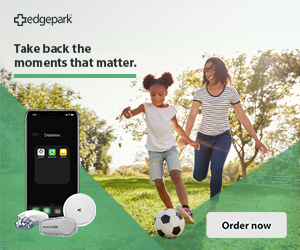6 simple tips for how to remember to take medication
You may have heard that it takes 21 days to create a new habit, but establishing any habit — like how to remember to take medication for managing your type 1 diabetes (t1d)— may be easier than you imagine. Whether it's flossing daily or exercising more, it takes time to get into the groove when you start a new habit. Having some steps to follow that keep you on track can help.
By implementing these simple tips, you'll have a proven process to help get used to your routine and juggle life's priorities.
1. Begin with a list
Having a checklist of your daily medications — including the time of day you take each one — can serve many purposes. The list can also offer reminders to check blood sugar and manage insulin requirements. Plus, you'll have a current list to share with medical providers, which can make appointments more time-efficient.
This list can also serve as a time-saving measure to maintain an inventory of pills and t1d supplies like insulin, syringes, and test strips. Schedule a consistent time to update your list each week to eliminate the guesswork of whether it's time to reorder.
This initial tip sets the stage for tracking the medications you take and when to take them, and it also gives peace of mind that you'll always have an ample supply on hand.
2. Link taking medications with a daily activity
What routine tasks do you complete every day when you wake up? If you eat breakfast, have a cup of coffee, or brush your teeth as you start the day, these are physical actions you can link to remembering to take medications.
In addition, create a visual reminder like a notecard that can be laminated and reused. Place the visual cue in the location of your home where you plan to take medications. For example, if you plan on taking your medication every morning when you have your coffee, place the note on the kitchen counter next to the coffee maker.
3. Save time by planning ahead
Remember the checklist you created in step one? Use the list to set up another time-saving system: Rather than taking pills out of bottles several times each day, set up a weekly medication organization system.
The organizer can be as simple as a pillbox container with compartments for seven days with slots for the morning, noon, evening, and bedtime. You can find weekly organizers near the pharmacy or online.
Another option is a more sophisticated pill organizer system with timers and alarms. Depending on the daily frequency of medications you take, it's possible to fill battery-powered or electronic pill organizers for 14 to 28 days.
Pull it all together by placing the medication box next to the visual reminder notecard. You'll have a single stop with a time-saving process to take your medications every day.
4. Create a "to-go" system for medications
Tips one through three might work if you're planning on staying at home, but you may be wondering how to remember to take medications after you leave home for the day.
If you use a blood sugar monitor, insulin, syringes, or an insulin pen, purchase a diabetes fanny pack and an insulin cooling pouch. Persons with t1d who use a continuous glucose monitor (CGM) and insulin pump may prefer carrying a small purse or wearing a belt bag to take additional supplies and pills for the day.
As you shop for a weekly pill organizer, pick up one or two daily pillboxes. Then, before you leave for the day, you can transfer the medications out of the multi-day box or electronic organizer into a single-use day container.
5. Use technology systems as reminders
Regardless of whether you're at home or on the go, using technology is another simple option for how to remember to take medications. Set the alarm on your cellphone or use an app like Medisafe that can alert your caregiver if you miss a medication dose.
If you are typically home when it's time to take medications, a talking alarm clock may be another option. You can also investigate other apps that combine reminder systems for various activities with tracking other health aspects like exercise and nutrition.
Online medical supply stores and pharmacies, like Edgepark, offer reminder systems for reordering medications. After setting up an account, you can request text or email reminders when it's time to re-order— removing one more task off the list of things to remember. Having a system for automatic reordering can help you manage and budget for the cost of medications.
6. Make self-care a priority
Last but not least, prioritize daily self-care. As you establish a consistent habit for exercise, sleep, and good nutrition, you'll feel physically and mentally at your best. Getting a good night's sleep or taking a short nap gives the brain a mental boost and supports memory.
By combining these simple tips for how to remember to take medication, you won't need to worry about missing this crucial part of your routine.
For additional support making sure that you have an adequate supply of diabetes products and supplies on hand, investigate Edgepark's Easy Reorder Program.




